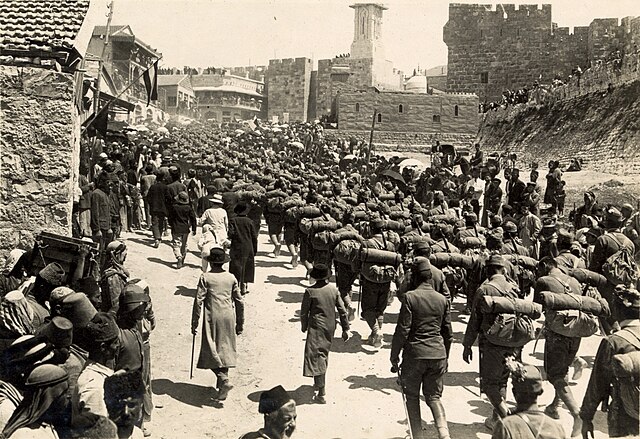The Armistice of Mudros was signed on 30 October 1918 and took effect at noon the next day, the Armistice of Mudros ended hostilities in the Middle Eastern theatre between the Ottoman Empire and the Allies of World War I. It was signed by the Ottoman Minister of Marine Affairs Rauf Bey and British Admiral Somerset Arthur Gough-Calthorpe, on board HMS Agamemnon in Moudros harbor on the Greek island of Lemnos.
HMS Agamemnon on an earlier visit to Mudros during the Dardanelles campaign in 1915.
Middle Eastern theatre of World War I
The Middle Eastern theatre of World War I saw action between 30 October 1914 and 30 October 1918. The combatants were, on one side, the Ottoman Empire, with some assistance from the other Central Powers; and on the other side, the British as well as troops from the British Dominions of Australia, Canada, and New Zealand, the Russians, and the French from among the Allied Powers. There were five main campaigns: the Sinai and Palestine, Mesopotamian, Caucasus, Persian, and Gallipoli campaigns.
A timeline of events on the Eastern and Middle-Eastern theatres of World War I
The Gallipoli Campaign, February–April 1915
War Minister Ismail Enver of the Ottoman Empire
Austrian troops marching up Mount Zion in Jerusalem, 1916





